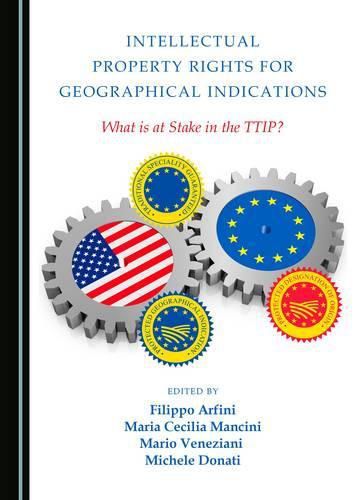Readings Newsletter
Become a Readings Member to make your shopping experience even easier.
Sign in or sign up for free!
You’re not far away from qualifying for FREE standard shipping within Australia
You’ve qualified for FREE standard shipping within Australia
The cart is loading…






Regulations on Intellectual Property Rights (IPRs) and Geographical Indications (GIs) have a long history, leading back to two separate organizations devoted to dealing with them: the World Trade Organization (WTO) and the World Intellectual Property Organization (WIPO). The WTO, through its 1994 TRIPS Agreement, gives wines a high level of protection, but leaves individual countries to draw up national GIs legislation for other agri-food products. On the other hand, the WIPO implemented the Lisbon Agreement of 1958 and gives GIs a high level of protection, but involves a lower number of countries. The US approach follows the WTO and is based on existing trademarks and competition legislation, while the EU legislation is partly based on the Lisbon Agreement and has a sui generis legislation, giving a high level of protection to agri-food GIs. The two different legislative approaches on IPRs on GIs are a source of political and economic debate between the US and the EU that impact massively on agri-food supply chains, consumer relations, and environmental and cultural aspects, as well as trade.This book provides insights into the potential impacts that the future Transatlantic Trade and Investment Partnership (TTIP) agreement could have at national, European and international level, and covers areas such as policy setting, implications for trade and consumer perception, food safety, and rural and local development. As such, it will provide a reference point for researchers and academics in agricultural and rural economics and law, as well as policy makers.
$9.00 standard shipping within Australia
FREE standard shipping within Australia for orders over $100.00
Express & International shipping calculated at checkout
Regulations on Intellectual Property Rights (IPRs) and Geographical Indications (GIs) have a long history, leading back to two separate organizations devoted to dealing with them: the World Trade Organization (WTO) and the World Intellectual Property Organization (WIPO). The WTO, through its 1994 TRIPS Agreement, gives wines a high level of protection, but leaves individual countries to draw up national GIs legislation for other agri-food products. On the other hand, the WIPO implemented the Lisbon Agreement of 1958 and gives GIs a high level of protection, but involves a lower number of countries. The US approach follows the WTO and is based on existing trademarks and competition legislation, while the EU legislation is partly based on the Lisbon Agreement and has a sui generis legislation, giving a high level of protection to agri-food GIs. The two different legislative approaches on IPRs on GIs are a source of political and economic debate between the US and the EU that impact massively on agri-food supply chains, consumer relations, and environmental and cultural aspects, as well as trade.This book provides insights into the potential impacts that the future Transatlantic Trade and Investment Partnership (TTIP) agreement could have at national, European and international level, and covers areas such as policy setting, implications for trade and consumer perception, food safety, and rural and local development. As such, it will provide a reference point for researchers and academics in agricultural and rural economics and law, as well as policy makers.